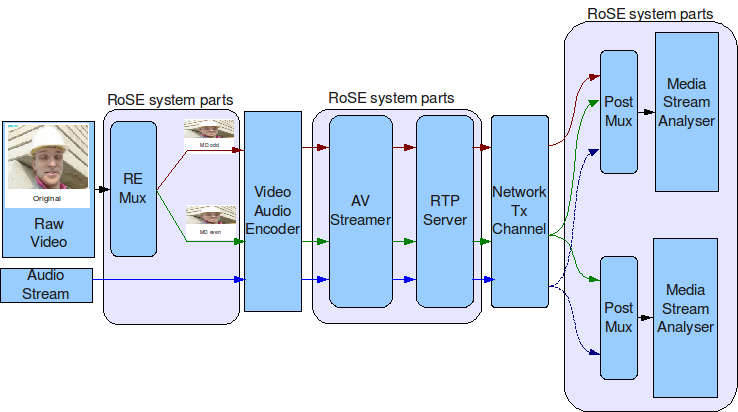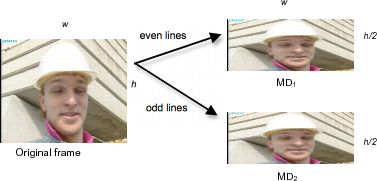
|
iMedia Application Laboratory |

|
RoSE project is composed of different programs, in particular:

The RoSE
project is especially focusing on moving some research techniques into practical streaming systems.
As view in the Fig 1 of the
general description section, the basic idea of RoSE is to divide the
stream of a video in different rtp traffic flows, so the clients can receive different numbers of rtp
flows depending on the network condition or on the hardware of the clients.
This approach is usually called Multiple Description Code (MDC)
and is part of the Scalable Video Coding (SVC) techniques.
For RoSE project has been chosen to use a simple spatial 2MD
technique. This technique is a typical and low-cost way to produce multiple descriptions.
The basically idea is to partition the source data into several sets and then compress these independently
to produce descriptions. The separation can be into odd- and even-numbered samples. In the spatial
dimension, this corresponds to spatial sampling of frames into N subsets. For N= 2, two
balanced descriptions can be generated by separating odd/even lines. This technique is denoted
as spatial 2MD.
In spatial 2MD, each frame in the input video is separated into odd and even subframes at
the Remux module of RoSE. The odd and the even subframes contain the odd and even lines,
respectively. Therefore, the height of the frames are halved but the width does not change.
In the following figure 3 it is possible to see the result of the 2MD technique.
